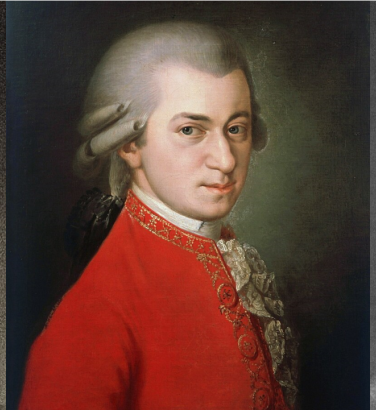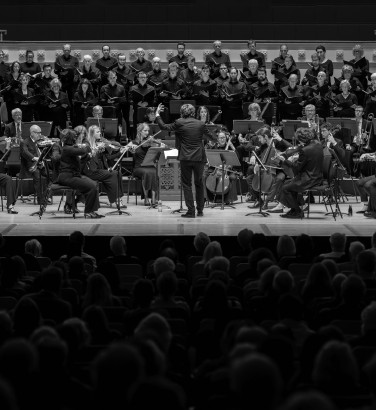
The waltz goes international
25 Nov 2024
News Story
Court Ball at the Hofburg (painting by Wilhelm Gause, 1900)
Last year we looked at the origins of the waltz, seeing how it made its way from the 1815 Congress of Vienna across Europe. The Viennese composers who followed – Lanner, Lehár and above all the Strauss family – continue to dominate the genre, but what did their counterparts in these other countries make of the new dance?
One of the earliest signs of the waltz’s increasing ubiquity came with those for solo piano written from the mid-1820s by Chopin, although there is no indication that he meant them for use as dance music. It then spread to the concert hall stage in 1830 thanks to Berlioz’ Symphonie fantastique, the second movement of which whisks the listener off to a ball scene. Chopin had captured the waltz’s grace and now, with Johann Strauss the Younger still a child of five, Berlioz added an undeniable sense of glamour at a time when the dance was essentially still in its infancy.
Its inclusion in a symphony, in place of the customary scherzo, would remain unusual. Tchaikovsky remains the best-known of any symphonic composers to have turned to the waltz here, something generally attributed to his love of ballet. The one in his Symphony No 5 serves as a refuge, providing comfort from the other movements’ surging emotions, but fast forward to his Symphony No 6 (Pathétique) and an element of grotesquerie has crept in: this waltz is written not in the usual three beats to a bar but five, as you'll see in the score video below.
Pause from reading a moment while you try out the steps to the music: not so much one-two-three one-two-three as one-two-three-four-five one-two-three-four-five. It feels a bit lopsided – you might think you've got an extra foot, or perhaps a limp – but such is Tchaikovsky’s genius that it still sounds perfectly elegant.
The waltz was fast gaining popularity in opera, often in settings which far predated the dance itself. It's pretty egregious in Gounod’s Faust and Chabrier’s Le roi malgré lui, which take place in 16th-century Germany and Poland respectively, but Der Rosenkavalier just about gets away with the anachronism: it may be set in the 1740s, but at least it's in Vienna. If anything, its composer Richard Strauss seems to be poking fun at himself for not being related to the city's native Strausses.
As far as ballet was concerned, however, the waltz was quick to become an integral part of the artform. Tchaikovsky’s scores have rather eclipsed those of his near contemporaries Minkus and Delibes, both increasingly known only by true devotees, but countless Russian composers have kept the torch alight since. Prokofiev, after limiting himself to more historically appropriate dances in Romeo and Juliet, made up for it in Cinderella, with a dizzyingly romantic waltz just before the stroke of midnight. Those by Stravinsky and Shostakovich are generally more acerbic, though the latter also found room for a hint of melancholy in his Jazz Suite No 2 – as would Sibelius, across the border in Finland, in his Valse triste.
There could also be more than a touch of wistfulness in the type of waltz embraced in France, where the valse musette reflected the popular culture of cafés and bistros. The musette is an instrument of the bagpipe family, but the music more often implies the accordion – as in the Edith Piaf song L’accordéoniste – and could often spill over into a style not far removed from music hall. Inevitably, Poulenc excelled at conveying this, his L'embarquement pour Cythère being a typically cheeky take on a painting by Watteau. (This democratisation of the waltz would extend into the UK, as shown by 'Oom-Pah-Pah', the tavern song which opens Act II of Lionel Bart's 1960 musical Oliver!.)
Irony would in fact become the byword for many 20th century interpretations of the dance. The impish glee which characterises the likes of the Wiener Walzer from Britten’s Variations on a Theme of Frank Bridge would probably have been unthinkable without the example of Ravel’s La valse, written in the aftermath of World War One. Often described as the apotheosis of the genre, it is in fact a great deal more than this: for some, it's a depiction of the waltz’s life cycle, emerging from murky depths before achieving brilliance and getting increasingly carried away with itself before collapsing from sheer exhaustion.
There is certainly a sense of reckless abandon about La valse, and a feeling that the music could come apart at the seams at any moment but crucially, it never does. As much as you may deconstruct the waltz, it's a resilient genre. As Ira Gershwin put it in By Strauss, set by his brother George as - how else? - a Viennese waltz:
It laughs, it sings, the world is in rhyme,
Swinging in three-quarter time.
Related Stories
![Three men, the first two in 18th century formal dress (one in black and white, one in a red coat), the last in an old photo, smoking]()
What is a sinfonia concertante?
17 March 2025
We delve into the history of a hybrid genre ...![]()
The SCO Chorus on music for Lent
10 March 2025
With Easter just around the corner, we delve into perhaps the richest (and often darkest) choral repertoire of all ...![]()
The bassoon concerto
3 March 2025
For the last article in our concerto series (for now), we turn to an instrument too often dismissed as the orchestra's resident joker.


